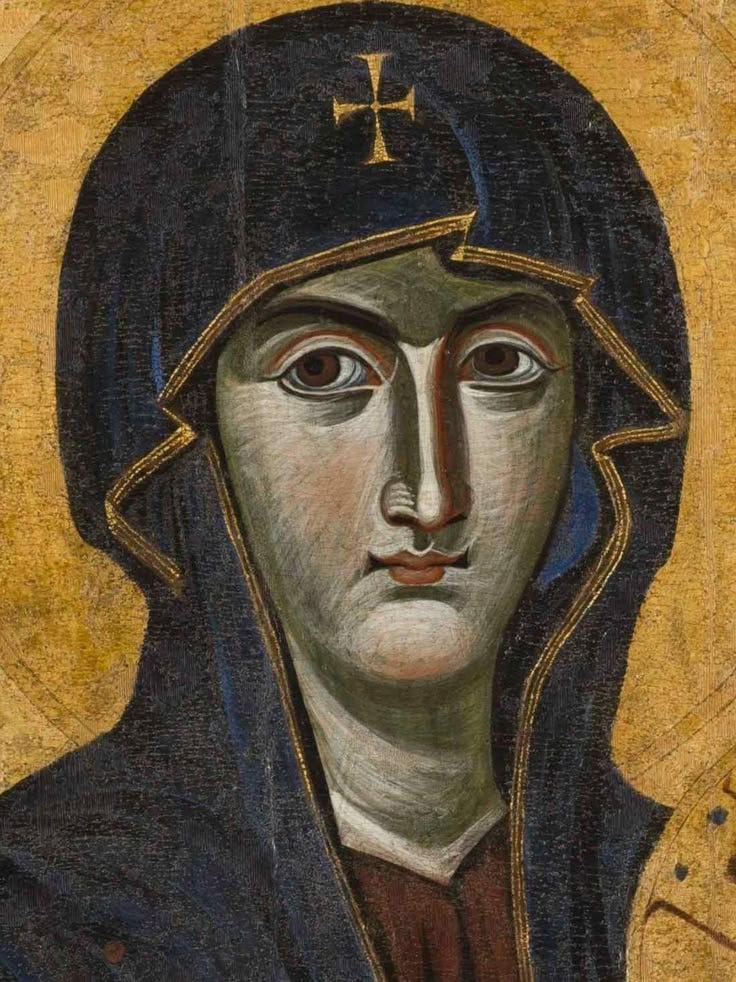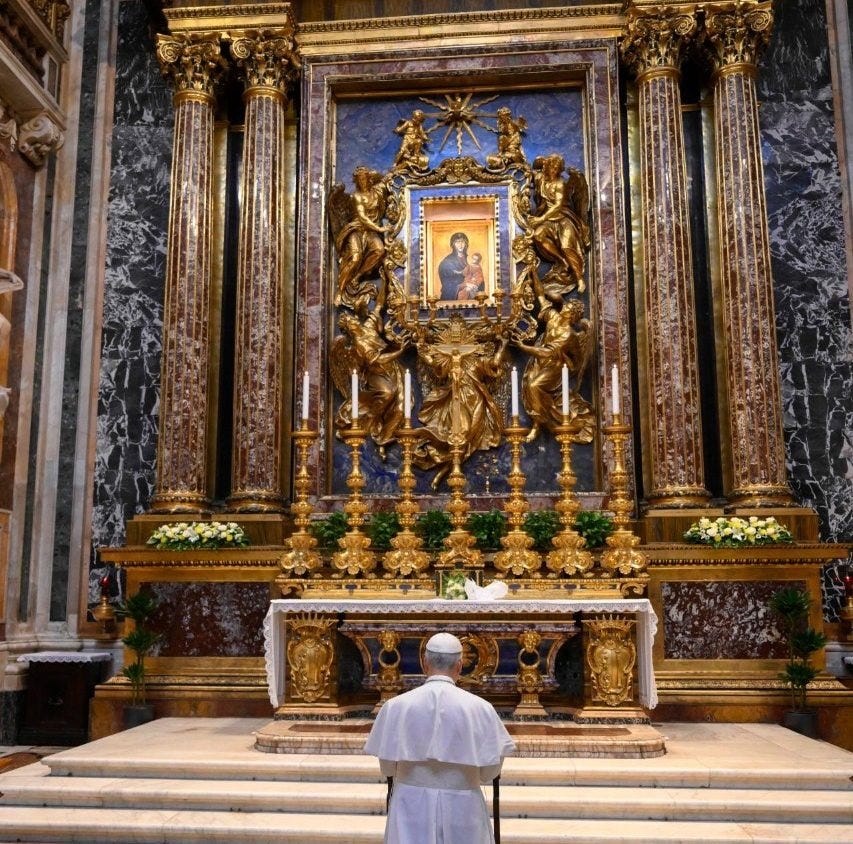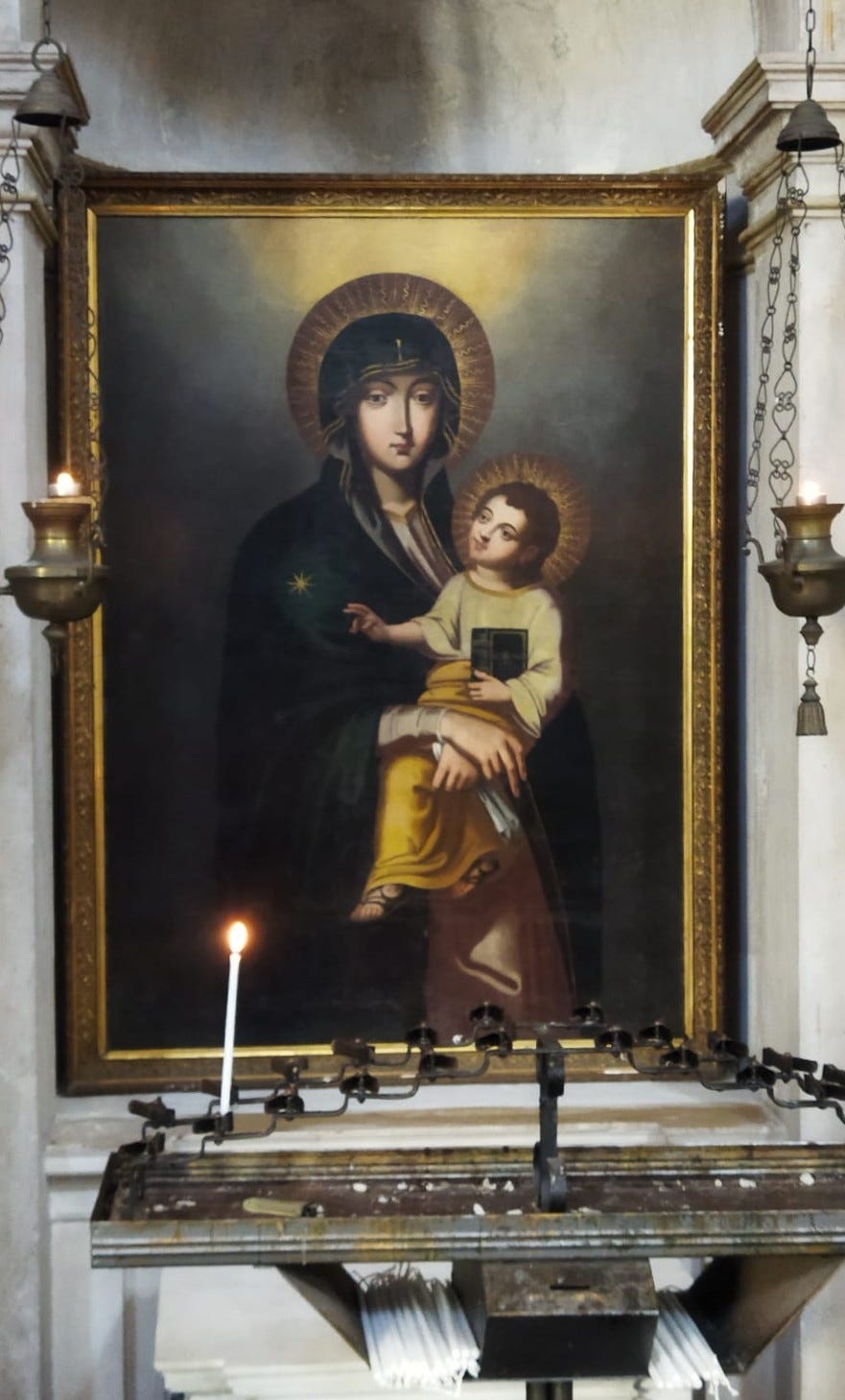Byzantium to Italy: The Roots of Italo-Byzantine Art
The crises in Constantinople was a boon to western art

If you stay strictly on the beaten tourist paths in this country, you’ll mostly see the things everyone already knows about. Baroque ceilings that roar for attention. Painters and sculptors who have whole wings of museums and libraries to themselves. (I sometimes call them The Four Turtles.)

But get separated from your tour group, wander off and get lost, you might step into certain obscure and dimly lit ancient chapels in the back streets of old Rome, or southern Italy or the back aisles and crypts of older churches in Umbria and Tuscany, and you’ll find a shift in mood. Here you won’t find the noisy and over-hyped political triumphalism of the Baroque that plagues the nation’s capital.
In these older places, we are brought back to a more mysterious time; the purpose of the art is more serious, more directly about your salvation. Gold backgrounds shimmer faintly in the half-light - coming through windows that are ancient slices of alabaster and onyx. The faces of figures are serene and sublimely otherworldly; not here do you find the softly humanistic Madonnas and Child of later Gothic or Renaissance sentiment.

These are figures whose unapologetic, direct gaze sees into you. Instead of the naturalistic portraits of people acting in this world we’re used to now, these are otherworldly, heavenly presences looking out at you from eternity. Even when they are fragmentary or faded, they demand that you grapple with ultimate reality; they inspire holy fear and trembling. Their purpose is deadly serious: your eternal salvation.
This is the world of Italo-Byzantine art, a form that flourished and dominated art in western Christianity from about the 8th or 9th centuries to the 14th and gave rise to Romanesque and Gothic.
Italo-Byzantine art is what happens when a monastic theology of the image is carried westward by foot and ship and begins to graft itself onto new places and new patrons. In some places, it remained fiercely conservative, icons in the strictly Greek style, painted in the same forms for generations. In others, it began to shift, subtly, to meet local tastes and practical needs. But even as Italian workshops leaned more toward greater naturalism, the Byzantine sacred grammar and vocabulary didn’t disappear. It remained, like a bedrock under the surface.
So, it turns out that the simple question, “How and when did Byzantine art become Italo-Byzantine?” leads straight down a deep rabbit hole, a labyrinthine story of imperial heresies, exiled monks, sacked cities and collapsing empires, forgotten hermitages and icons carried across mountains and seas.
What art scholars now call “Italo-Byzantine” isn’t a mere stylistic phase. It’s the visual record of a sacred inheritance surviving in exile.
I hope you’ll join us below the fold today as we begin our exploration of this sacred patrimony. The translation of Byzantine art into the west is a pretty big and broad subject, so this is probably going to turn into a multi-part series. I promise it won’t be boring.
At The Sacred Images Project, we explore Christian life, thought, history, and culture through the lens of the first 1200 years of sacred art. This publication is entirely supported by readers — no ads, pop-ups or distractions — just thoughtful work, funded by your subscriptions.
While The Sacred Images Project has grown into my full-time work, we're now building toward an even richer, multi-layered platform, with plans for e-books, mini-courses, videos and eventually podcasts and more. Your support helps make this expansion possible.
If you’d like to follow along, you can subscribe for free and receive a weekly article exploring the treasures of Christian history, culture, and sacred art..
Paid subscribers ($9/month) receive a second, in-depth article each week, plus additional exclusive posts featuring in-person explorations, high-resolution downloadable images and more.
If you believe in the importance of preserving and deepening our sacred patrimony, I hope you’ll consider becoming a subscriber today.
From the shop: I’m happy to offer this drawing of the Crucified Christ, “Christus Patiens” that I did in the style of the 14th century Umbrian Gothic panel crucifixes. It’s printed on the same museum quality 100% cotton, acid-free paper I drew it on.
You can browse the shop here:
If you’d prefer to set up a monthly contribution in an amount of your choice, you can also do that at the studio blog, or make a one-off donation to help keep this work going. If you subscribe through my personal page, I’ll add you as a complimentary subscriber here. And thank you.
I hope you’ll join us below the fold.





